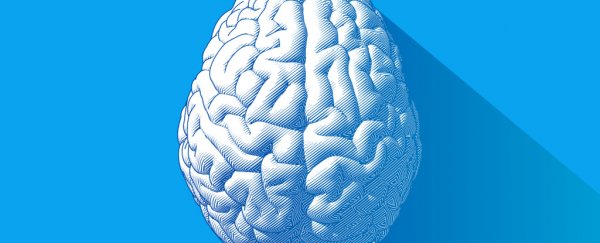You're sitting an exam, and just can't recall the answer you know is in your brain somewhere. A new study suggests that a quick zap to a region in your prefrontal cortex might help you find the missing memory.
Okay, so maybe using this in practice is more science fiction than science at this stage, but the new research has helped neuroscientists pin down one area of the brain where we retrieve our memories from.
The study, led by researchers at the University of California, Los Angeles (UCLA) was looking specifically at the left rostrolateral prefrontal cortex - an area of the brain which is located behind the forehead, between the eyebrow and hairline, and – as the name suggests – on the left side of the head (in those who are right hand dominant).
It's already been theorised to be involved in high-level thought, including monitoring the information collected in other areas of the brain.
"Our previous neuroimaging studies showed the left rostrolateral prefrontal cortex is highly engaged during memory retrieval," explains Jesse Rissman, a UCLA research psychologist and one of the researchers.
"Now the fact that people do better on this memory task when we excite this region with electrical stimulation provides causal evidence that it contributes to the act of memory retrieval."
The researchers split 72 participants across three groups and then made them undergo testing over two consecutive days. The team was testing for three different things: memory, reasoning, and perception.
On the first day, the participants were shown 80 different words and were given techniques to be able to remember them.
On the second day, the researchers tested the groups on those 80 words, with the participants undergoing tests to measure their memory, reasoning, and perception. But the three groups were given three different conditions – they either got a light non-effective zap (the control), a zap to increase the excitability of neurons in the left rostrolateral prefrontal cortex, or a different type of zap to decrease it.
By the way, the 'zap' isn't as terrifying as you'd think. The technique is called transcranial direct current stimulation and, according to the researchers, it gives people a warm tingling sensation.
The team found that neither reasoning nor perception were significantly better in the 'increased excitability' zapped group, but they did find that their memory was significantly better – 15.4 percent higher in their score results.
"We didn't expect the application of weak electrical brain stimulation would magically make their memories perfect, but the fact that their performance increased as much as it did is surprising and it's an encouraging sign that this method could potentially be used to boost people's memories," said Rissman.
"We also predicted the reasoning task might improve with the increased excitability, and it did not. We didn't think this brain region would be important for the perception task."
But the researchers explain that this isn't the only area of the brain which retrieves memories. Our brains are incredibly complex organs, and we're still only scratching the surface of how they work.
"We found dramatically improved memory performance when we increased the excitability of this region," said Rissman.
"We think this brain area is particularly important in accessing knowledge that you formed in the past and in making decisions about it."
And whatever you do, don't try this at home. "The science is still in an early stage," warns Rissman.
The research has been published in the Journal of Cognitive Neuroscience.
